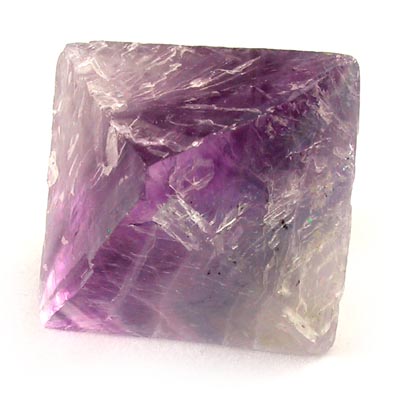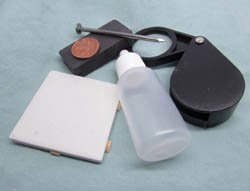Sign up for Lesson Plans, discounts & more!
Mineral Identification
And The Properties of Minerals

Mineral identification is done by checking for certain mineral properties or characteristics. Minerals are inorganic compounds that occur naturally in the earth. Elements such as silicon, magnesium, aluminum, calcium and iron form special combinations that have particular characteristics that identify them, just as organs and tissues combine from cells in special ways to form different plants and animals.
The various minerals can be classified according to similar characteristics. Scientists called mineralogists consider the following characteristics for mineral identification:
- Streak
- Luster
- Sheen
- Hardness
- Cleavage
- Crystal system/habit
- Color (although by itself, this is not a reliable characteristic)
- Specific Gravity
- Clarity or Transparency
Minerals can be tested according to each characteristic and reasonable identification can be made. With practice, many minerals can be identified solely by visual characteristics. The only absolute test, however, is to determine the chemical composition and the manner in which the chemicals came together to form the mineral. In order to to this some simple tools are helpful.

Mineral Identification Tools
Minerals can be tested according to each characteristic and reasonable identification can be made. With practice, many minerals can be identified solely by visual characteristics. The only absolute test, however, is to determine the chemical composition and the manner in which the chemicals came together to form the mineral. In order to to this some simple tools are helpful.
- a small squeeze bottle or eye dropper
- a way to test harness (a collection of objects of known hardness soft, medium, and hard)
- a magnet
- magnifying glass
There is no specific order for testing a mineral, but many possible classifications can be ruled out using simple visual assessments. Using the tools listed above you can also check for acidic reaction from organic matter and limestone with a dilute acid ( like vinegar ) in the squeeze bottle. You can check for hardness using a penny, nail, and apiece of glass. If you have a large enough specimen use a hammer to break a piece. This will tell you about the cleavage and fracture pattern of your mineral.Check for crystal structure using the magnifying glass. And check for ferrous metals using the magnet.
Rock and Mineral Collections For Sale
Mineral Identification Test Kits For Sale
For details on testing minerals for identification follow this link:
mineral identification

INTERESTED IN MORE? IF SO, YOU MAY WANT TO CHECK OUT OUR OTHER SITES:
fossilicious.com - Our online fossil and mineral rock shop.
fossils-facts-and-finds.com - An educational site about fossils.











